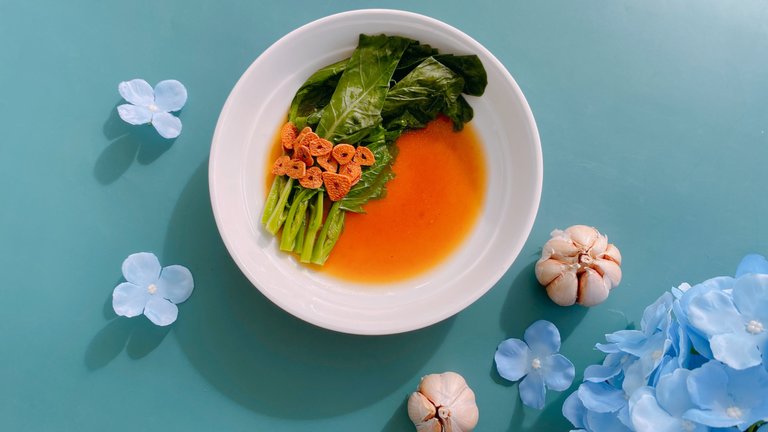
Discovering Chinese Kale is a joy for me. It started when I took a walk to a traditional market where the local residents were Chinese. Indeed, in the area where I live, there is a lot of ethnic and cultural mixing. We live in harmony with the Chinese people even though we have different religions.
There is one thing that I like about walking in traditional markets where the majority of buyers are Chinese. The market sells vegetables favored by the Chinese. Including pakcoy and also Chinese Kale or I call it here by the name Kailan.
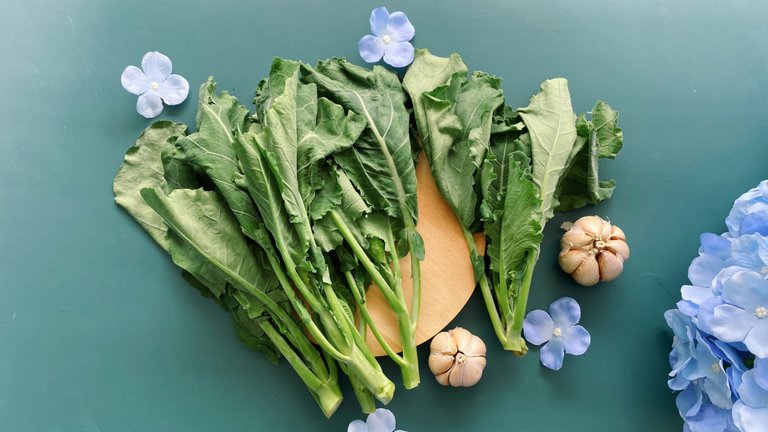
There is one of my favorite vegetables, namely pakchoy / bakchoy which I know from the market which is dominated by Chinese buyers. In the past, I really didn't know what pakcoy was. I only know about mustard greens which is a local vegetable in my area. Since then, I really like pakcoy. So, when I discovered Chinese Kale, I expected that I would like this vegetable just as much as when I first encountered pakchoy.
This is a very exciting opportunity for me when I can know the various kinds of delicious and healthy vegetables that are usually eaten by them. One thing that often makes the vegetables consumed by Chinese people unpopular with our non-Chinese people is because of price reasons. Yeap, the price is very influential at all.
Vegetables sold to the Chinese target market are quite pricey. Apart from that, it is indeed influenced by the belief in the comfort of the taste of the vegetables themselves. Non-Chinese people are afraid that unfamiliar vegetables will not be accepted by the tongue.
I am happy to introduce to my family about vegetables other than mustard greens which are also delicious as daily side dishes. Namely pakchoy / bakchoy and kailan / Chinese Kale.


Well, today I'm going to show you how I prepare Chinese Kale (Kailan) which has a captivating taste. Indeed, I really like my new recipe. You could say this recipe met my expectations. I love this vegetable as much as I love pakchoy / bakchoy vegetables. So, I am happy to share this recipe with you guys.
This Chinese Kale recipe is very easy to make. With spices that you can easily find in your kitchen. But about Chinese Kale, if you can't find it, you can apply this recipe for mustard greens that you generally encounter.
Looks Like Kale
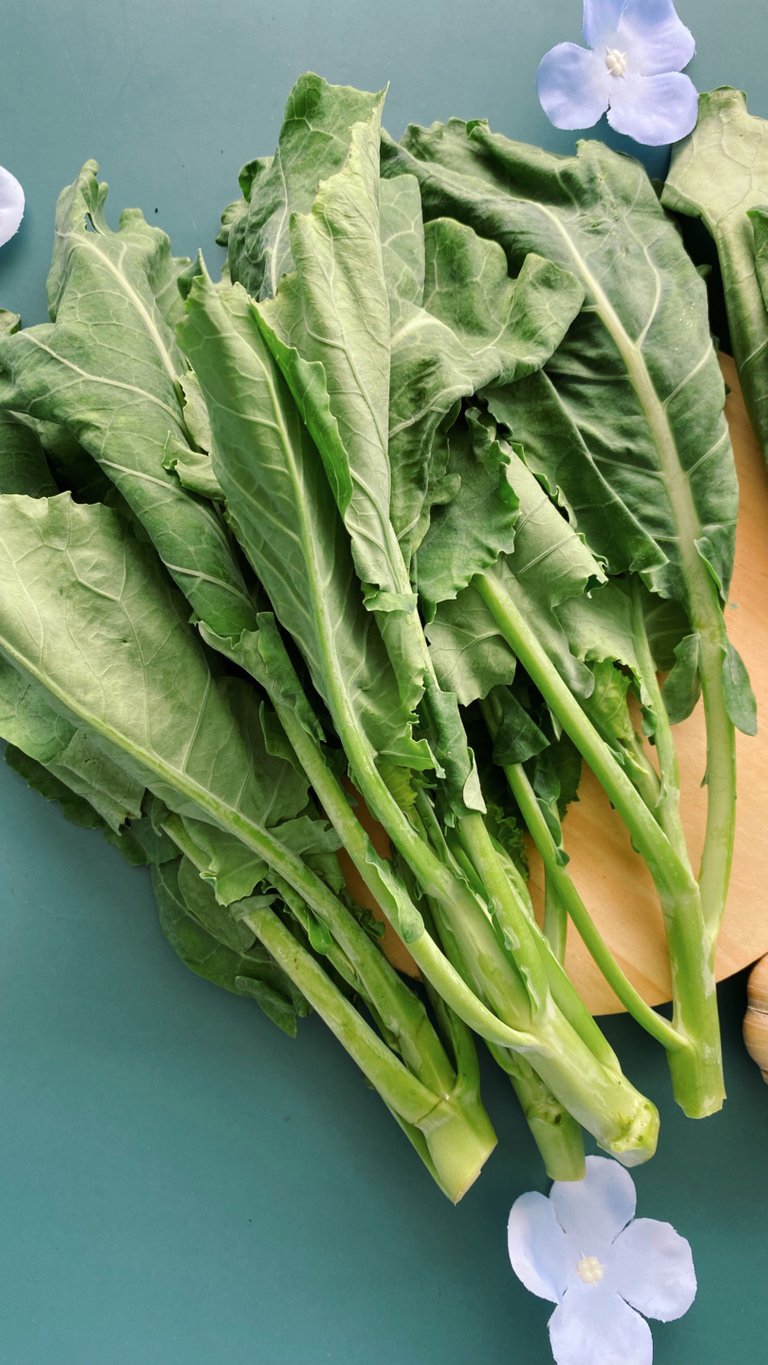
In Indonesia, we call this veggie Kailan. I don't even know if this vegetable is called Chinese Kale. Indeed, a flash in my mind led me to Kale's appearance when I bought this Kailan vegetable for the first time. I finally found out that this vegetable is named Chinese Kale because of the internet! Oh, thanks internet. I searched the internet for the English name for Kailan, so that readers of my blog can recognize this veggie easily.
Preparing this recipe is very easy. I promise that. We don't need a lot of effort. This recipe basically just uses the boiling way similar to the blanching way. It's just that this time it will take a little longer than when we blanch the broccoli.
For the parts of Chinese Kale that will be used for cooking, we can use all parts of this Chinese Kale. It's just that, we need to check with our own hands the level of hardness/softness of the stem. Instead, we throw away the stems of Chinese Kale which already feel hard when we press the stems. The way these step works is similar to the way when we want to cook mustard greens to get rid of old stems because they have a tough texture.
Soy Sauce With Garlic Seasoning
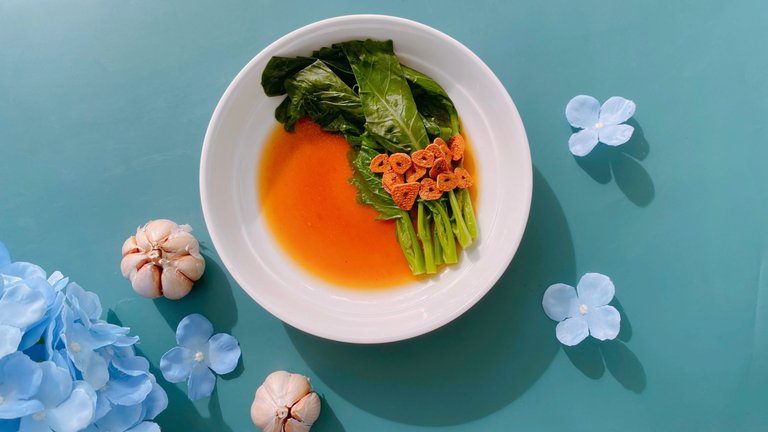
The seasoning for serving Chinese Kale is quite simple. Only use garlic, onion, spring onion, ginger, and soy sauce because it's vegan. You can also use the oyster sauce for those of you who want to serve this menu, not for a vegan.
Garlic and spring onions can be called superheroes for seasoning this simple yet delicious recipe. The final taste of soy sauce using garlic will be very fragrant. It also tastes savory with the addition of the warm sensation produced by ginger.
The following are the ingredients needed:
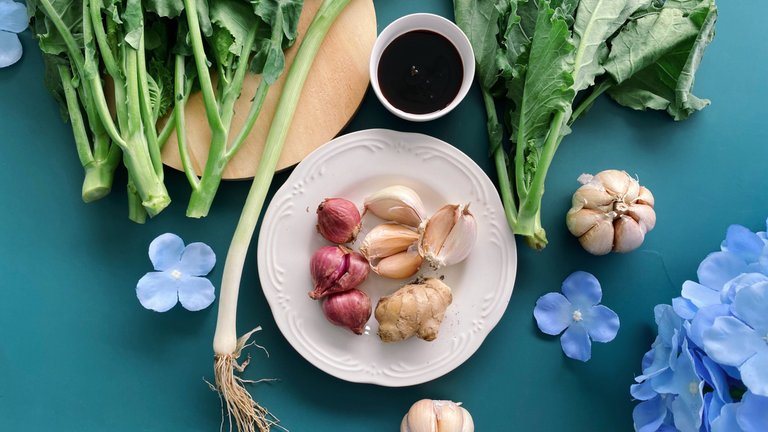
- 250 grams of Chinese Kale
- 5 red onions, thinly sliced.
- 5 cloves of garlic, thinly sliced
- Thumb-sized ginger, thinly sliced.
- 3 tablespoons of soy sauce
- 2 teaspoons of salt
- 1 teaspoon of ground pepper
- 250 ml - 350 ml of water
- 1 tablespoon of cornstarch or tapioca flour mixed with 1 tablespoon of water.
Cooking Instructions
STEP 1

Prepare Chinese Kale. Discard tough stems. Do not cut the stems and leaves into small pieces. Just leave it according to the original shape of the leaves that are still attached to the leaf veins. Then wash the Chinese Kale clean.
STEP 2
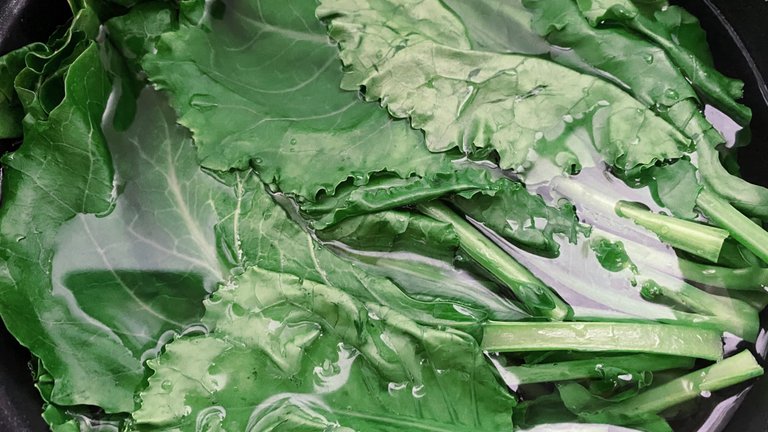
Boil Chinese Kale using previously boiled water. Sprinkle with salt.
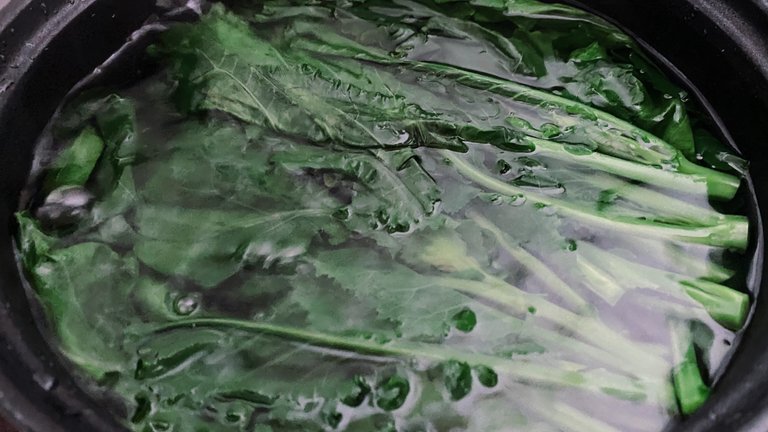
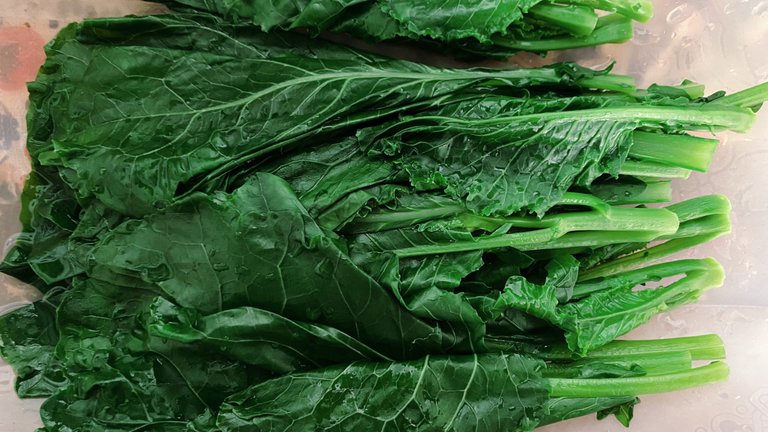
Here I use 8 minutes to make the Chinese Kale look evenly cooked and fit to eat. The texture is also good, not soggy.
STEP 3
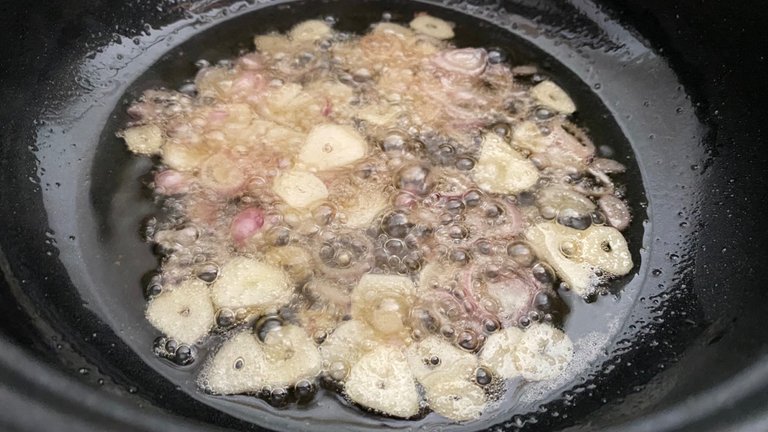
While waiting for the Chinese Kale to finish boiling, it's time to make the sauce. Oh yes, we have to halve the onion and garlic.
Half of it is for garnishes when serving later, and the rest is for seasoning the sauce.
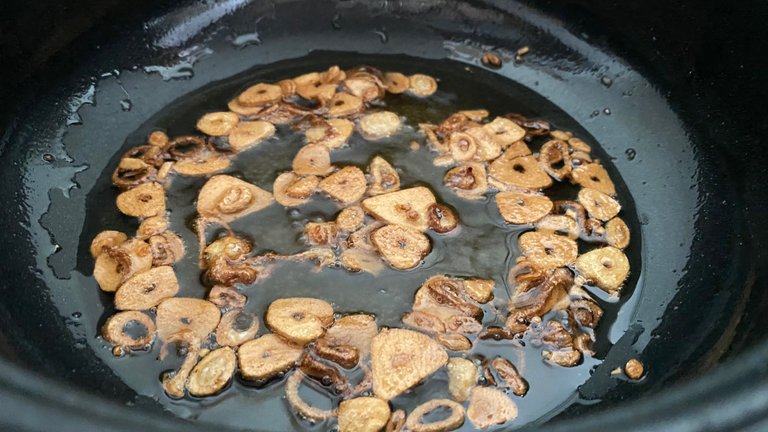
After the oil is heated, add the onions and garlic which will be used as fried onions for serving. As an important note, use low heat and keep stirring the slices of garlic and onion so that they are perfectly cooked to a crisp and golden brown color.
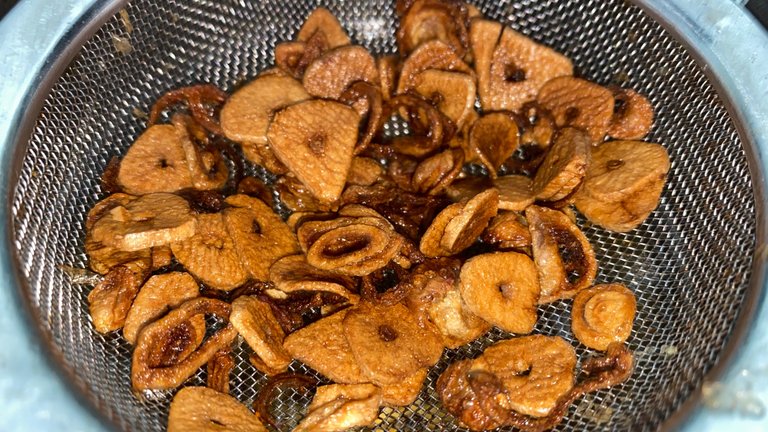
Set aside the fried onions and let the remaining frying oil separate.
STEP 4
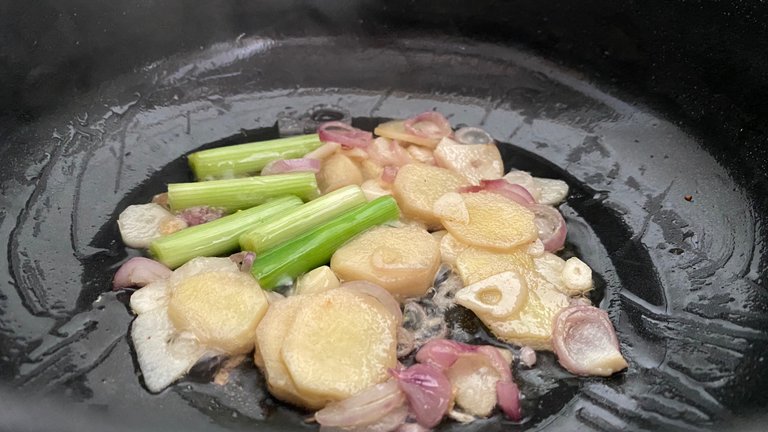
Heat the oil again to sauté the spices for the sauce. Add onions, garlic, spring onions, and ginger. Stir well until they become fragrant.
STEP 5
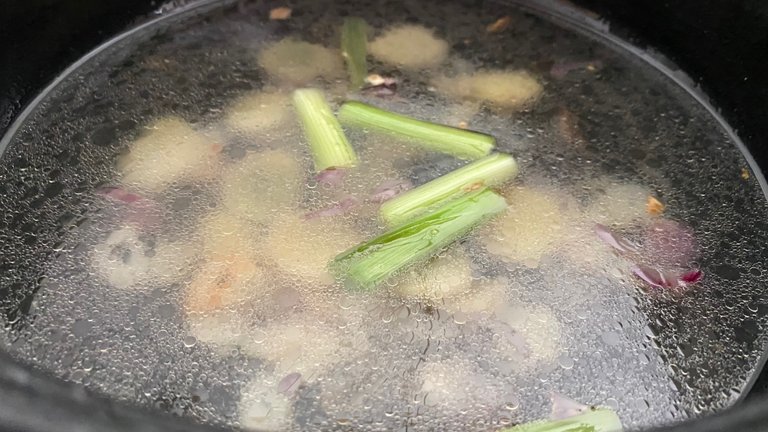

Add water, followed by soy sauce, ground pepper, and salt. Then taste correction. Wait for it to boil.
After tasting and feeling that it has a taste that suits your taste, then it's time to add a mixture of cornstarch or tapioca flour to thicken the sauce.
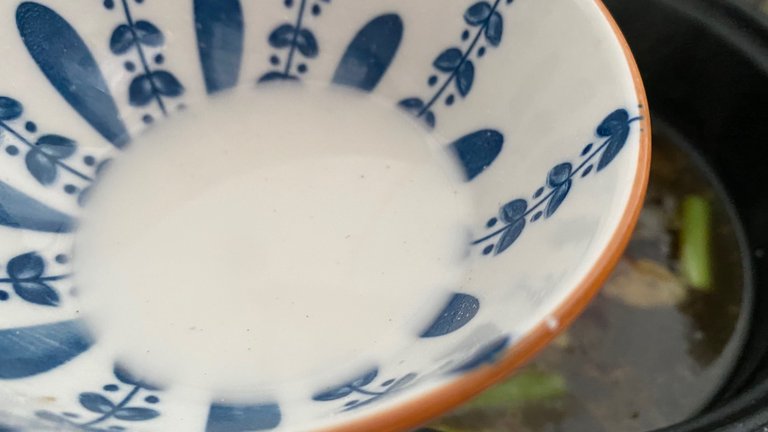
After thickening, the sauce is ready to be served with boiled Chinese Kale. Also add your favorite Staples food, such as (maybe) mashed potato, taro, yam, cassava, or even rice. Can you imagine the delicacy of this menu? I hope what I convey through this blog can also convey the delicious taste.
Serving
For the presentation, I focus on the clean and simple appearance of this dish. Formed following the shape of the plate, which is then sprinkled with fried garlic for beautiful in detail.
In the sauce, I didn't include any bits of ingredients. So it's enough to just use the liquid for serving.
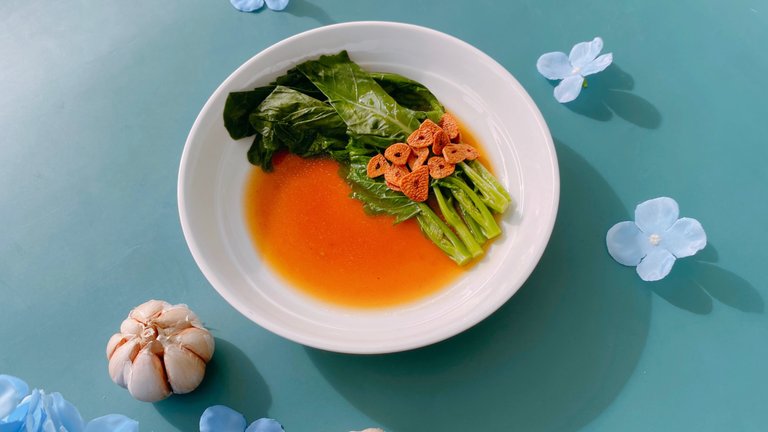
By the way, I used a white serving plate to make the soy sauce the dominant object. I hope you guys like this plating way for Chinese Kale With Garlic and Soy Sauce.
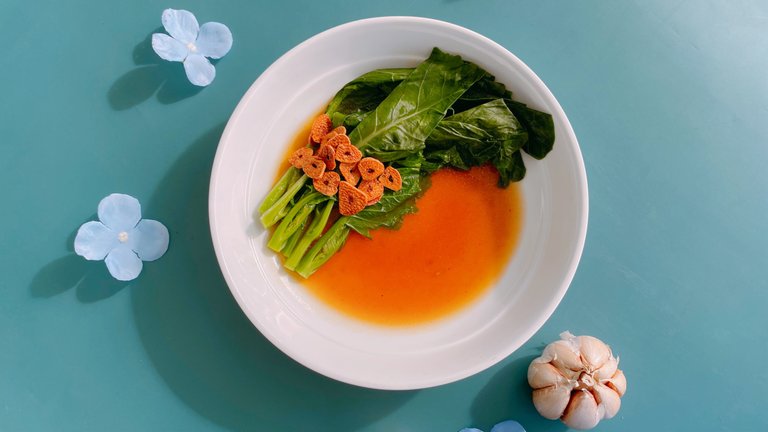
I like how the texture of Chinese Kale still offers a crunchy element. In contrast to the crunchy level of pakchoy / bakchoy stems. Chinese Kale does not contain as much water in the stems and leaf bones as pakchoy. That's why we will be able to find a clear difference in taste and texture between Chinese Kale and Pakchoy.
So, that was about Chinese Kale (Kailan) which I paired with garlic and soy sauce, with warmth from the ginger. Until next on my food blog!
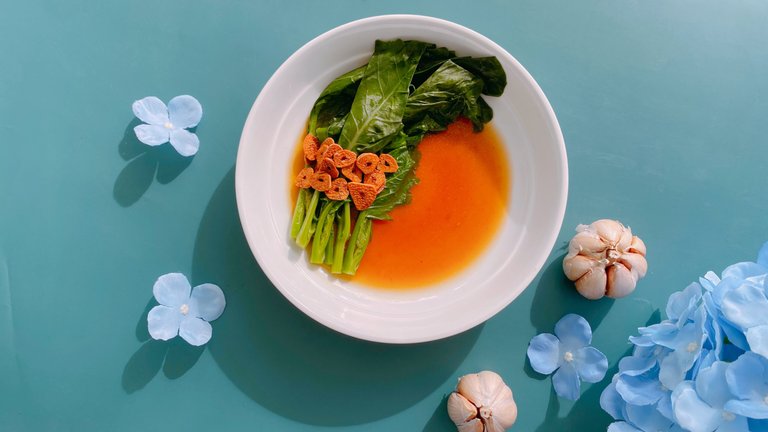
Thank you for reading my blog and reblog if you want my blog this time worthy of reading by others.
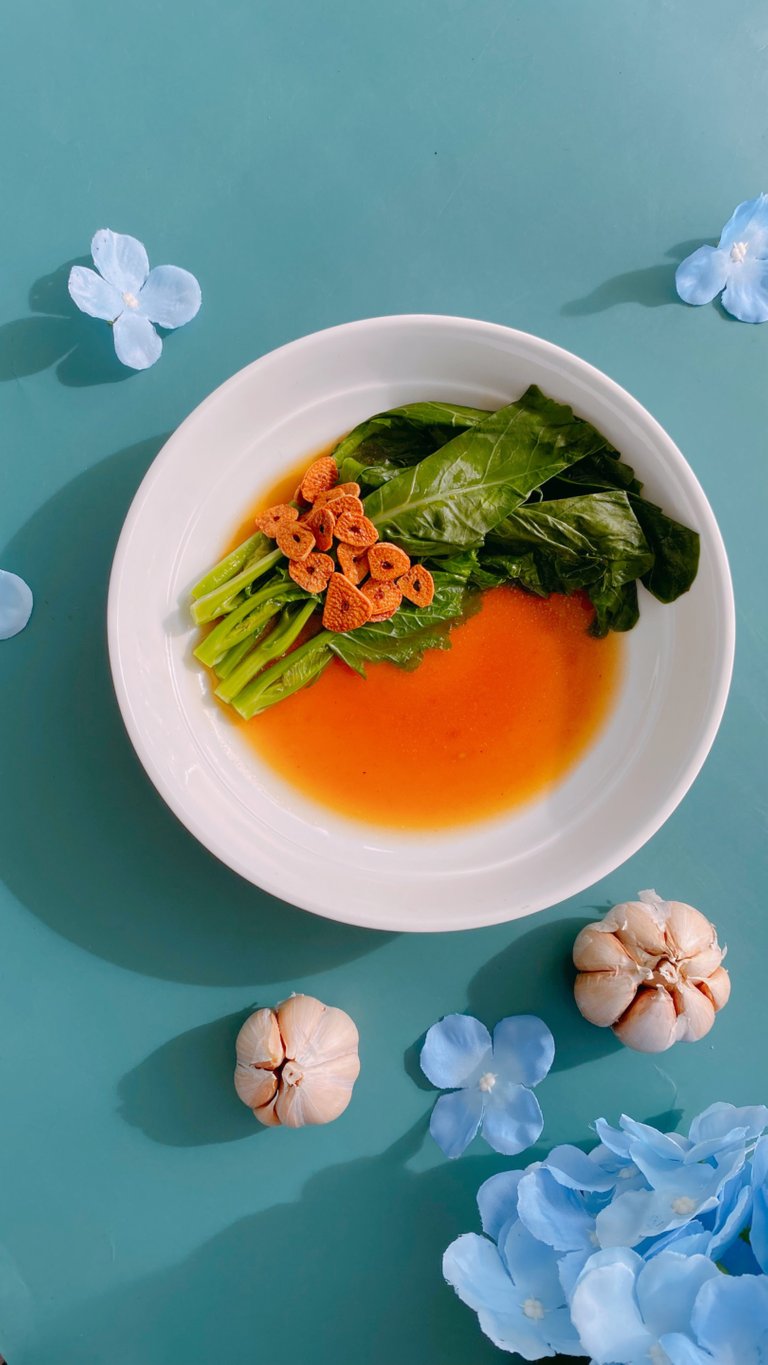
Best Regards,
Anggrek Lestari
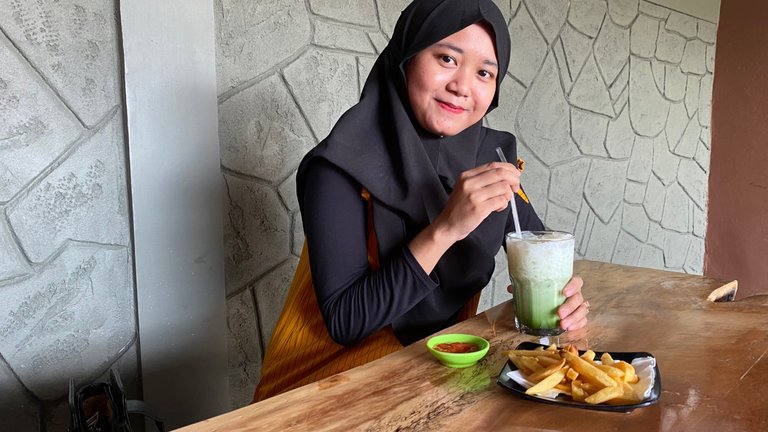
Anggrek Lestari is an Indonesian fiction writer who has published two major books. Now She is a full-time content creator. She has a goal to share life, poem, and food content that makes others happy and can get inspiration.
Contact Person: authoranggreklestari@gmail.com
Discord: anggreklestari#3009

 You've been curated by
You've been curated by